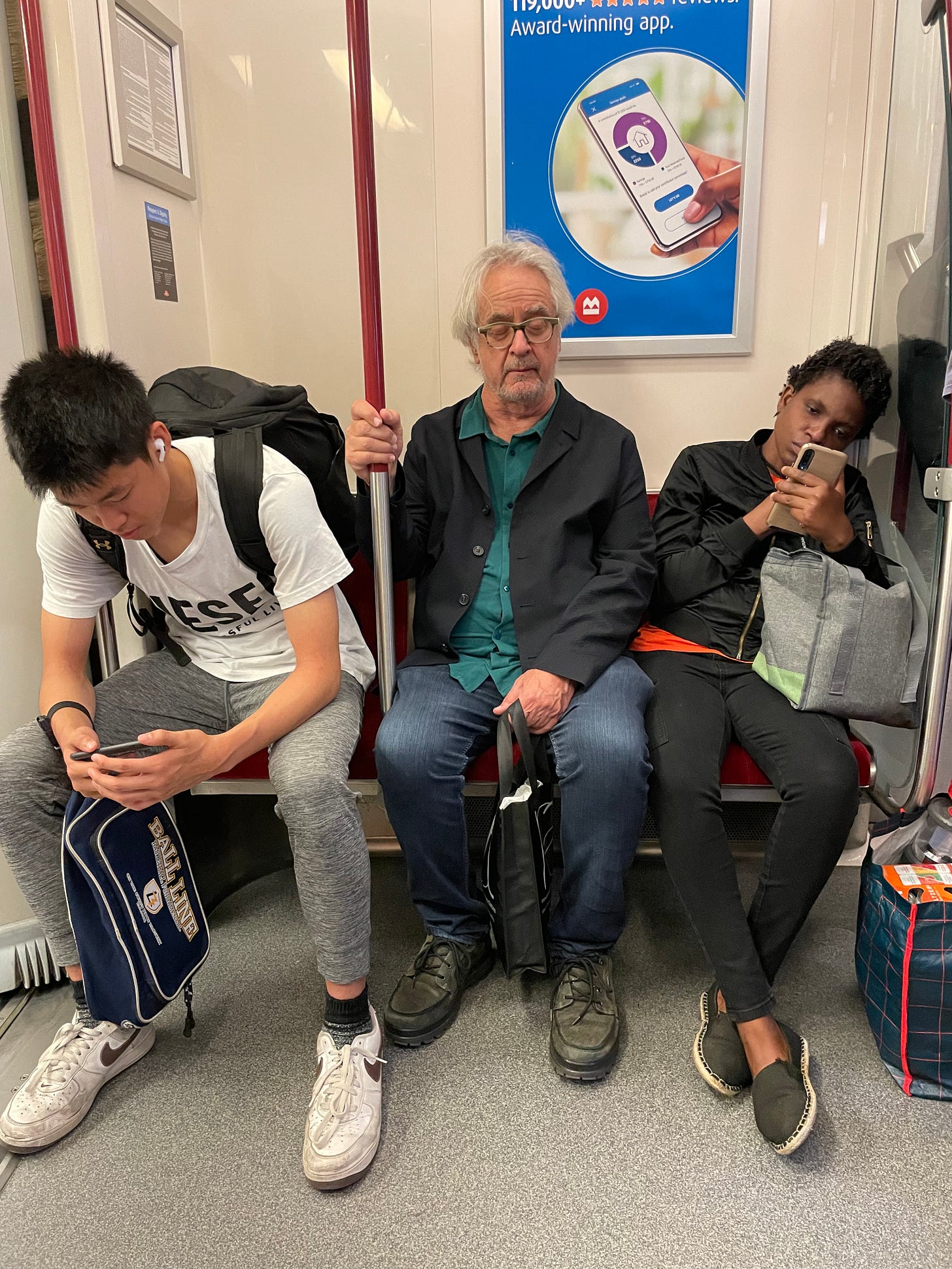The Endgame
Newsletter #40 - Jigong Geosa
Toronto, October 1, 2023
Jigong Geosa
If you live in Seoul, South Korea, you can ride the subway for free once you turn 65. There’s a lot to ride. The system has 23 lines, 302 stations and a thousand kilometers of track. The New York Times recently reported: “Older adults who ride free of charge make up about 15 percent of Seoul’s annual ridership.... The riders have become such an established part of the city’s fabric that they have a nickname — ‘Jigong Geosa,’ derived from the phrase ‘free subway’...”
Many of the Jigong Geosa ride the subway every day for hours on end. There are many reasons they do this: to get out of tiny apartments, to people watch, to pass the time, to escape boredom, and, in summer, to stay cool (the subway is air-conditioned). But there is something beyond these practicalities, something ineffable and magical about the riding experience. You are on the move. As The New York Times puts it, “The joy is in the journey.”
For the Jigong Geosa, the sentence “The joy is in the journey” does not refer to a world of inspirational double-think and self-help mumbo-jumbo. The Jigong Geosa journey is not that kind of trumped-up journey. It’s a real journey. The Jigong Geosa go from subway station to subway station, up and down the line. They are on the move. They are covering kilometres. That’s what they want to do.
Some Jigong Geosa live in poverty. For them it matters that they can ride the rails for free. Others are middle-class—the Times reporter interviewed a retired interior designer, a retired math professor (“who was riding with a volume on the theory of Chinese poetry tucked in his satchel”), a part-time construction inspector, a Catholic priest. The middle class can afford to pay a fare but want to ride for free anyway: for them, riding free has symbolic importance. Korean politicians sometimes talk about scrapping free fares for seniors on the Seoul subway. “Why are you trying to take this happiness away?” asks one aged traveller.
I live in Toronto. Our subway system doesn’t offer much to an old person seeking a journey of happiness and joy. It’s only 70 kilometres long with 70 stations. To ride it end to end only takes about three-and-a-half hours. That’s not enough for the Jijong Geosha. And there’s no free travel for old people: we only get a modest discount. I’ll pass over other Toronto subway issues—creaking infrastructure, unreliable schedules, periodic violence in the stations and on the cars... Enough to say that it’s nothing like 수도권 전철 / 首都圈電鐵 (Korean for Seoul subway).
In Toronto and other big cities, where does an old and lonely person go for succour? The public library is a place. The Toronto public library system has 100 branches. There’s stuff to read in each one, maybe even a volume on the theory of Chinese poetry hidden away, and they’re warm in winter and cool in summer, and the whole system is free and wonderful. But library branches are not always open (the one nearest to me is closed some mornings and on Sunday), and the buildings are noticeably immobile. You can have a cultural or intellectual journey there, but that’s not the same thing as riding the rails.
I think it’s time for me to ride the rails, take a journey, look for joy, look for happiness.
P.S. A reader writes in response to last week’s Endgame about white horses: “From my childhood, still said by me when I see one, out of habit and happy childhood memories: ‘Lucky, lucky white horse/ Lucky, lucky lee/ Lucky, lucky white horse/ Bring your luck to me/ Clap, stamp/ Stamp clap!!”




Free transit (for any age group!) seems like a great thing the government could do to eliminate loneliness!